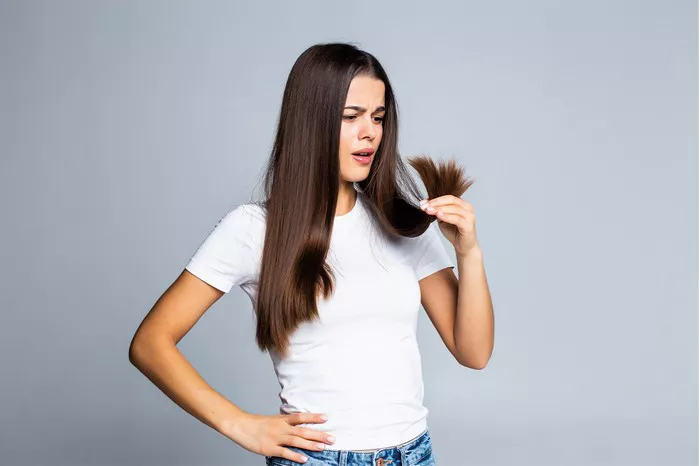Thick hair, while often admired for its volume and richness, can sometimes be challenging to manage. For those seeking a sleeker, lighter, and more manageable hairstyle, learning how to thin thick hair at home is both a cost-effective and convenient solution. This guide will walk you through practical techniques, natural methods, and essential Hair Health Advice to help you achieve your hair goals without stepping into a salon.
Understanding Thick Hair
Thick hair refers to the density of hair strands on the scalp, as well as the diameter of individual hairs. People with thick hair often experience issues like excessive volume, difficulty styling, longer drying times, and frequent tangling. Before proceeding with any thinning methods, it’s essential to evaluate the natural characteristics of your hair and ensure you maintain its overall health.
Important Considerations Before Thinning Hair
Before taking action to thin your hair at home, consider these crucial points:
- Assess your hair type and condition to choose the most suitable method.
- Invest in proper tools like thinning shears or razors.
- Prioritize hair health to avoid long-term damage.
- Consider seasonal and lifestyle factors affecting your hair’s behavior.
Effective Methods to Thin Thick Hair at Home
1. Using Thinning Shears
Thinning shears are specially designed scissors with notched blades that remove bulk from hair without drastically changing the overall length. Here’s a simple way to use them:
- Start with clean, dry hair.
- Divide hair into manageable sections.
- Hold a small section of hair between your fingers and make small snips with the shears midway down the hair shaft, avoiding the roots and ends.
- Comb through after each cut to remove trimmed strands and assess the volume reduction.
2. Razor Cutting Technique
Razoring creates a softer, textured look while simultaneously removing bulk from thick hair. Here’s how to do it:
- Dampen the hair slightly for smoother handling.
- Take a razor comb or a straight-edge razor and gently glide it down the hair shaft at an angle.
- Use light, quick strokes to avoid taking off too much hair at once.
Be cautious with this method to prevent over-thinning and ensure the final look remains natural and polished.
3. Layering the Hair
Adding layers is a strategic way to redistribute volume and make thick hair appear thinner. Basic layering can be achieved at home by:
- Sectioning the hair into parts: top, sides, and back.
- Starting with the back section, cut small vertical sections at a downward angle.
- Repeat with the sides and top, ensuring layers blend naturally.
If you’re unsure about cutting layers yourself, consider seeking online tutorials or enlisting a friend’s help for better accuracy.
Natural Methods to Make Hair Appear Thinner
1. Hair Masks for Smoother Strands
Hydrating hair masks can weigh down hair slightly, making it appear thinner. Ingredients like coconut oil, aloe vera, and honey are excellent for smoothing out the hair shaft, reducing frizz and volume naturally.
2. Blow Drying Techniques
Use a blow dryer with a concentrator nozzle to direct airflow down the hair shaft. This flattens the cuticle and minimizes puffiness. Always finish with a blast of cool air to lock in sleekness.
3. Choosing the Right Hair Products
Look for smoothing serums, leave-in conditioners, and anti-frizz sprays. Avoid volumizing products, which can enhance the thickness you’re trying to tame.
Essential Hair Care Tips When Thinning Hair
While thinning your hair, maintaining its health is paramount. Here are some critical Hair Care Tips to keep your hair vibrant and strong:
- Use sulfate-free shampoos to prevent excessive drying.
- Incorporate deep conditioning treatments weekly.
- Trim split ends regularly to encourage healthy growth.
- Limit heat styling to avoid damaging newly thinned sections.
- Protect hair from environmental aggressors like UV rays and pollution.
Common Mistakes to Avoid
1. Over-Thinning
One of the biggest risks of DIY hair thinning is going overboard. Removing too much hair can lead to uneven lengths, gaps, and an undesirable look. Always work slowly and check your progress regularly.
2. Using the Wrong Tools
Household scissors or razors not intended for hair cutting can cause jagged cuts and unnecessary breakage. Invest in professional-grade tools for the best results.
3. Neglecting Aftercare
After thinning your hair, it’s essential to adjust your hair care steps. Focus on moisture retention, minimal heat use, and regular trims to maintain a polished appearance.
When to Seek Professional Help
Not everyone will find success thinning their hair at home. If you encounter any of the following issues, it may be time to consult a professional stylist:
- Difficulty managing sections and achieving evenness.
- Concerns about damaging your hair’s natural texture.
- Desiring a more complex thinning style, such as internal layering or precision razoring.
Conclusion
Learning how to make thick hair thin at home empowers you to take control of your hairstyle and better enjoy your natural beauty. By selecting the right methods, using the appropriate tools, and practicing proper aftercare, you can achieve salon-worthy results in the comfort of your home. Always prioritize the health and integrity of your hair by following trusted advice and maintaining a consistent care routine. Remember, beautiful hair isn’t just about appearance—it’s a reflection of how well you nurture and respect it.
Relate topics:
- How to Fix Bleached Hair Breakage at Home
- What Hair Oil Should I Use?
- How Often Should You Wash Afro Hair?


